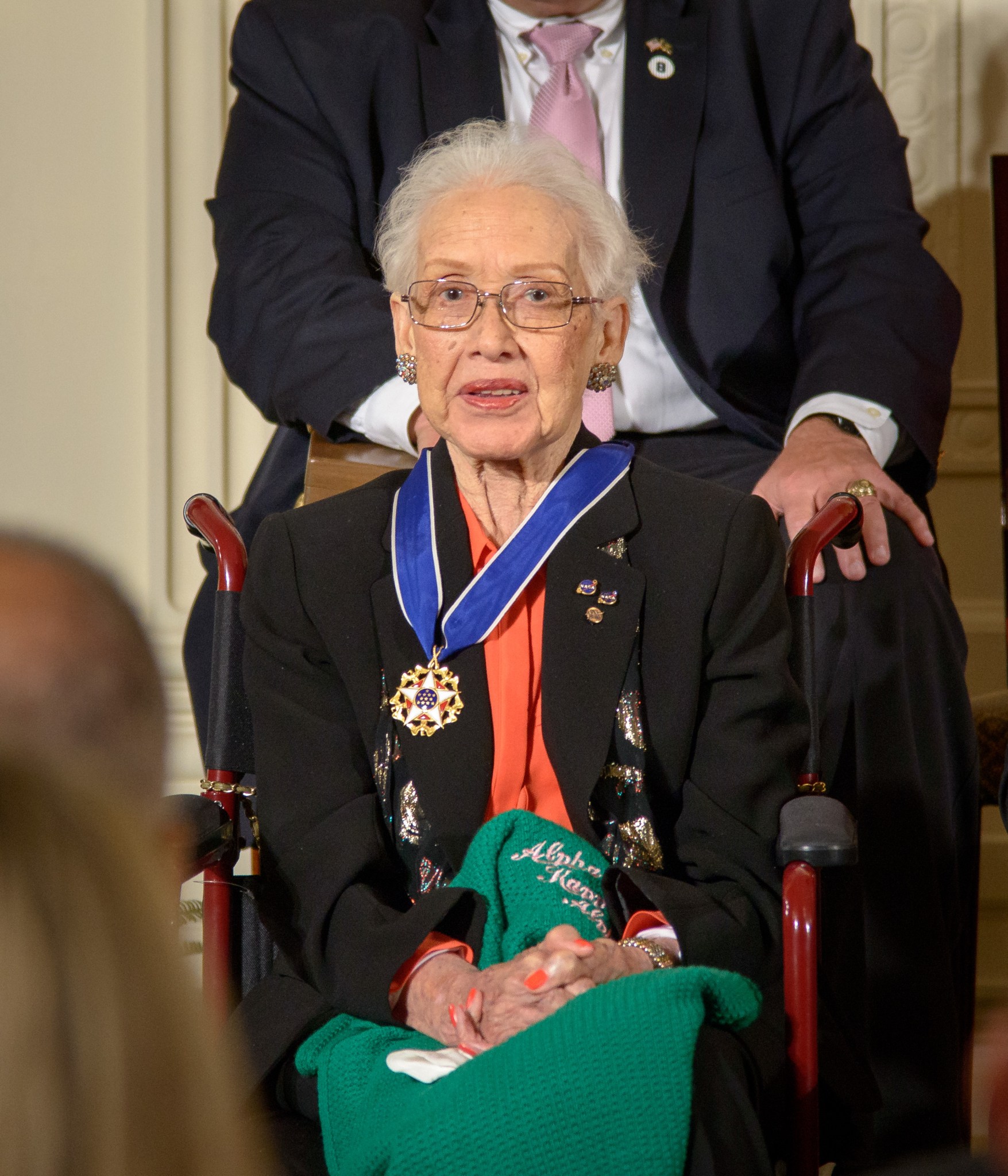On Aug. 26, 1918, in White Sulphur Springs, West Virginia, Katherine Johnson, a future hero to American space travel and exploration was born.
She was the youngest of four children. Her mother was a schoolteacher and her father a lumberman, handyman, and farmer who also worked at West Virginia’s Greenbrier Hotel.
Katherine’s aptitude for math and science was evident early and her parents arranged for her and her siblings’ education to be a priority.
She graduated high school at only 14 and attended West Virginia State College, a historically Black college. When West Virginia decided to quietly integrate its graduate schools in 1939, West Virginia State’s president, Dr. John W. Davis, selected her and two men to be the first black students offered spots at the state’s flagship school, West Virginia University.
In 1953, in a time of racial segregation, she started a job as a human “computer” with the National Advisory Committee for Aeronautics (NACA), the predecessor to NASA. She worked in the West Area Computing section at Langley Research Center on a team headed by fellow West Virginian Dorothy Vaughan. This turned into a permanent position and set the trajectory for Katherine’s role in space exploration.
In 1961, Johnson did trajectory analysis for Alan Shepard’s Freedom 7 mission, America’s first human spaceflight. In 1960, she and engineer Ted Skopinski coauthored Determination of Azimuth Angle at Burnout for Placing a Satellite Over a Selected Earth Position, a report laying out the equations describing an orbital spaceflight in which the landing position of the spacecraft is specified. It was the first time a woman in the Flight Research Division had received credit as an author of a research report.
Her expertise was key to John Glenn’s orbit around Earth in 1962, with Glenn putting much of his confidence in Katherine to make the mission a success. As a part of the preflight checklist, Glenn asked engineers to “get the girl”—Johnson—to run the same numbers through the same equations that had been programmed into the computer, but by hand, on her desktop mechanical calculating machine. “If she says they’re good,’” Katherine Johnson remembers the astronaut saying, “then I’m ready to go.”
Katherine co-authored more than 20 scientific papers and was instrumental in many of NASA’s early missions including Project Apollo’s Lunar Module with the lunar-orbiting Command and Service Module, the Space Shuttle and the Earth Resources Technology Satellite. But while her calculations made reaching for the stars possible, many didn’t know her name until the 2016 film “Hidden Figures” told the story of Katherine, Dorothy Vaughan and Mary Jackson.
In 2015, President Barack Obama awarded Johnson the Presidential Medal of Freedom, citing her as a pioneering example of African-American women in science, technology, engineering, and mathematics. “Katherine G. Johnson refused to be limited by society’s expectations of her gender and race, while expanding the boundaries of humanity’s reach,” said Charles Bolden, NASA’s first Black administrator and a former astronaut.
In 2019, the NASA Independent Verification and Validation Facility in Fairmont, West Virginia, was re-named for Katherine Johnson, and the change was honored with a ceremony attended by several West Virginia political leaders and Johnson’s family.
“Katherine Johnson was a true pioneer and as a West Virginia native, and West Virginia State University graduate, it is an honor to have our Program anchored in a physical facility, in West Virginia, that bears her name,” Program Director Wes Deadrick has said. “Frequently, when I pull onto University Drive and see her name on the front of our building, I am reminded of challenges and adversity she faced and strived to overcome on a daily basis.”
Johnson died Feb. 24, 2020, but her legacy lives on at NASA and especially within the walls of the IV&V Facility named in her honor. Every year on Aug. 26, West Virginia marks ‘Katherine Johnson Day’ to celebrate her impact on the world of STEM, space exploration, and American history.
Johnson’s images and words of wisdom adorn the IV&V Facility, and each year employees of the program reflect on how her memory inspires the work they do today.
More information on Katherine Johnson’s career, legacy, and STEM contributions and more, visit: https://www.nasa.gov/langley/katherine-johnson
https://www.nasa.gov/feature/goddard/2019/west-virginia-nasa-facility-renamed-after-agency-iconhttps://www.nasa.gov/feature/not-so-hidden-anymore-nasa-ivv-facility-wv-leaders-celebrate-katherine-johnson-day


























